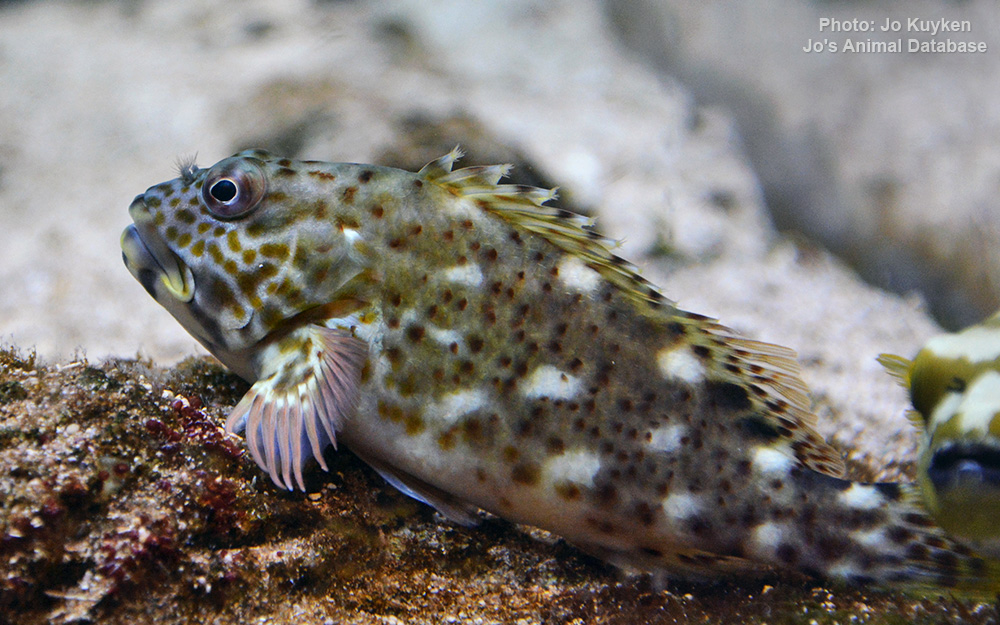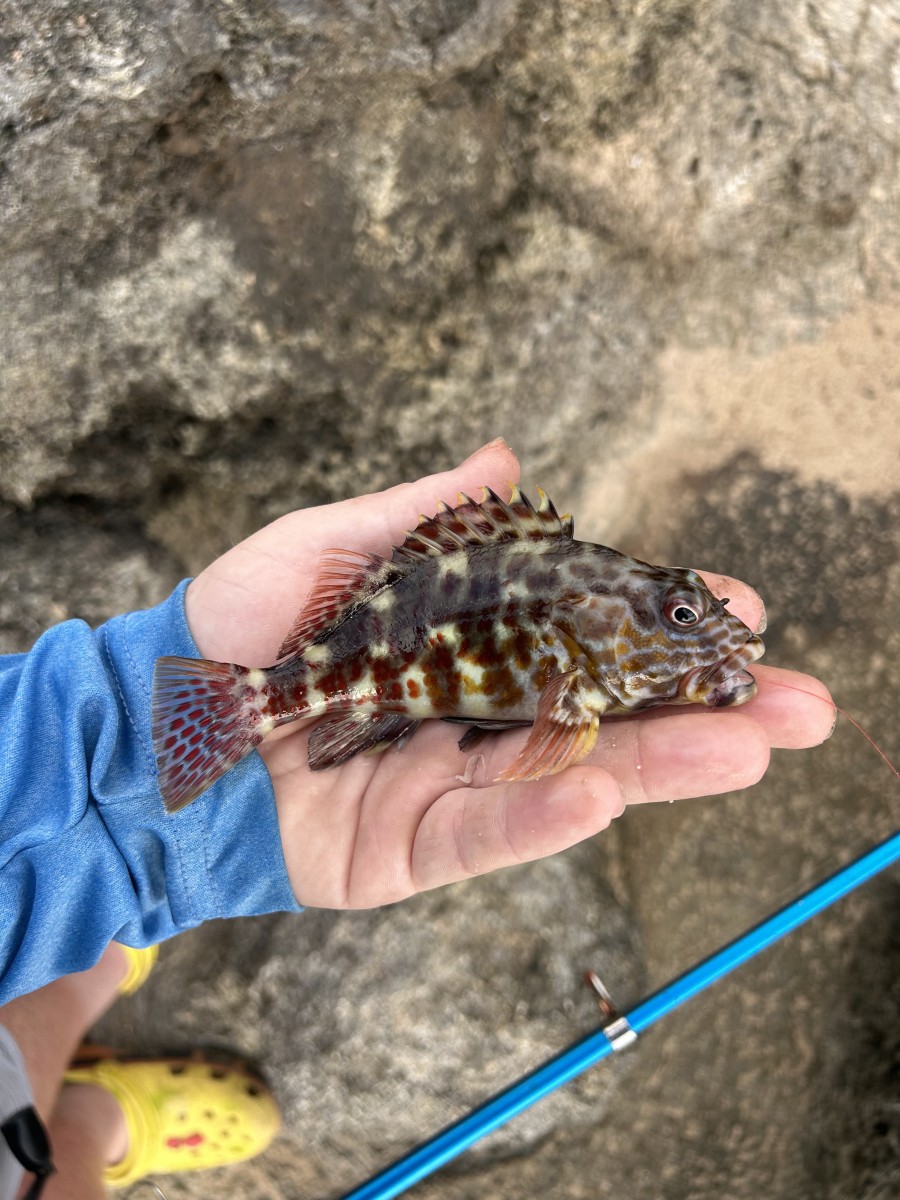Stocky hawkfish
(Cirrhitus pinnulatus)

Image source: Jo's Animal Database
Classification
General data
Cirrhitus pinnulatus has a body which has a standard length of roughly three times its depth. The head has a short, blunt snout and a large mouth which extends back as far as the rear edge of the eye which has a low bony ridge above it.
The mouth has two types of teeth, an outer row of canines and an inner row of villiform teeth. There are also teeth on the centre and sides of the roof of the mouth. They have a fringe of cirri on the posterior margin of the anterior nostril. The upper margin of the preopercle has fine serrations.
The continuous dorsal fin has 10 spines and 11 soft rays, there is a deep incision between spiny and soft rayed parts of the fin and a tassel of cirri near tip of each spine. The anal fin has 3 spines and 6 soft rays. The caudal fin gently rounded and the pectoral fins do not extend as far as the tips of pelvic fins, The pectoral fin rays number 14 with the lower 7 unbranched and robust.
This species attains a maximum total length of 30 cm (12 in).
The overall colour of this hawkfish is brown with white blotches and irregular reddish-brown spots on the body. The head is marked with sinuous reddish-orange lines and spots. There is a dark saddle-like blotch on the dorsal part of the caudal peduncle.
Cirrhitus pinnulatus has a wide Indo-West Pacific distribution being found from the Red Sea and the east African coast south as far as Port Alfred in South Africa east across the Indian Ocean and into the Pacific where it reaches as far east as Hawaii, south to New Caledonia and Australia and north to the Ryukyu Islands of southern Japan.
In Australia it is found at Ningaloo Reef and Scott Reef in Western Australia, Cartier Reef in the Timor Sea and from Lizard Island to Escape Reef on the Great Barrier Reef in Queensland, it also occurs at Christmas Island and the Cocos (Keeling) Islands.
It occurs at depths between 1 and 23 m (3 ft 3 in and 75 ft 6 in) but is typically found at depths of less than 15 m (49 ft).
This species is found in exposed areas such as the surge zone on the seaward sides of reefs and along rocky coastlines.











